By: Sara Laitinen, Minna Leppänen, Anniina Mutanen
Pictures: Hillamaria Pirhonen
Imagine a team sport that combines carrying, bouncing, kicking, hand-passing and soloing the ball, all in order to score points either by kicking or hand-passing the ball over the crossbar (1 point) or kicking it into the goal (3 points). Now imagine teaching the rules and the skills of this game to a group of 30 players who among them speak over 10 different first languages and have never seen this game being played before.
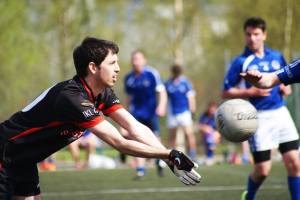
This is the situation where coach Shane McDermott found himself in when he first founded Jyväskylä GAA, a Gaelic Football team, in 2014. Gaelic football is is one of four traditional Irish sports (along with hurling, Irish handball and rounders) controlled by the Gaelic Athletic Association (GAA). Gaelic football has spread all over the world with Irish immigrants and continues to gain popularity especially in Europe. In Finland, there are currently two other Gaelic football teams besides Jyväskylä GAA: one in Oulu and one in Helsinki. As well as playing the game, these clubs aim to promote Irish culture in Finland in several other ways, for example by celebrating Irish holidays and organising events.
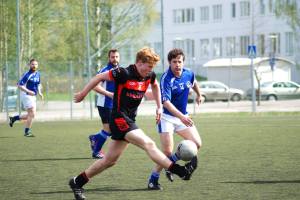
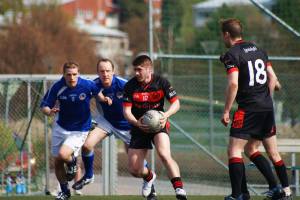
The aim of our project was to investigate language use in a multilingual environment. For this Jyväskylä GAA was the perfect subject, since the players are originally from all over the world and speak over ten different first languages. As expected, English is being used in the team as a lingua franca at trainings and in other activities. We collected data by observing one training session of the team and, to get further information, by interviewing the coach.
The most remarkable discovery we made in our observations was that code-switching seems to happen very often at the training sessions of Jyväskylä GAA. During the session that we observed we could hear several different languages being spoken, mostly by two native speakers of that particular language. However, especially during a competitive situation, many different languages were shouted back and forth among the whole group. Coach Shane McDermott also confirmed that code-switching happens a lot in the group and that it has two main functions: humor and clarifications. In the first case, the expressions are often short and understandable by all the members of the team. In the latter case, players who share the same first language might sometimes switch to that language to explain to each other how a particular drill is done, for example.
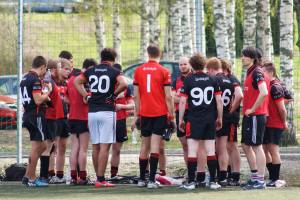
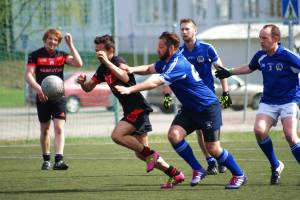
We were especially interested to find out what kinds of problems the fact that the players don’t share a mutual first language can cause. According to McDermott, the biggest challenge for him is that he cannot always be sure if everyone understood what he aims to communicate, especially during matches. In order to avoid misunderstandings, McDermott tries to use common words and simple sentence structures when talking to the team at trainings and to physically demonstrate all the drills. All in all, English seems to be working as the lingua franca of the team without significant problems.
To conclude, perhaps the most significant finding of this project is that in a multilingual context, English is used as a common tool to achieve a communicational goal. This means that it doesn’t matter what variety of English you use, what your accent is like or how much code-switching is needed, just as long as you can get yourself understood.

